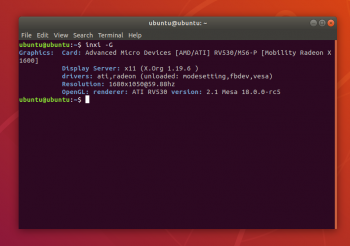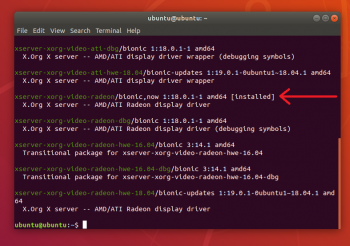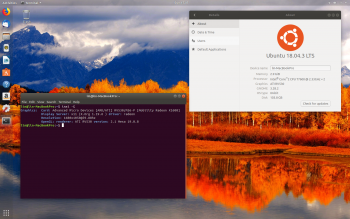I've discovered a few things by booting from the Live DVD.
First, using some of the commands you folks have helped me with, I've figured out the correct driver to use. Screenshots of Terminal while booted into the Ubuntu 18.04 Live DVD:


So now I know what I need to be working with. I just need to figure out how to remove the open source driver Ubuntu loads on install (whilst ignoring my rage at the @#$&%!!! fact that it loads the damn thing in the first place, when clearly Ubuntu is capable of detecting my hardware and loading the right driver... but anyway...), and then install the correct radeon driver identified above.
Or, maybe I don't - I've discovered something else of interest. I tried booting from the Live DVD three times this morning, and on the first two attempts I ended up with a black screen. The first time, I shined a light through the Apple logo on the back and could see the boot had been successful; it had reached the Ubuntu desktop, but apparently my display's backlight wasn't working. On the second attempt, same story. I wondered why this was so, since I'd successfully booted from the Live DVD last night, all the way to a fully lit display.
Then I realized that last night, I hadn't had the machine connected to the Internet prior to boot... whereas this morning, I'd connected an ethernet cable before startup. So I pulled the ethernet cable, gave it another shot, and voila! I arrived at a backlit, fully functional Ubuntu. I then reconnected the ethernet cable and had networking capabilities.
Here's my theory: when Ubuntu is installed with networking enabled, and with the option to update as it installs, it somehow breaks itself (at least on my hardware). No backlight from the Live DVD, no accelerated graphics from the full install. To test this theory, I'm going to wipe Ubuntu completely, then reinstall - without updating on install, without even a connection to the Internet - and see what happens. I'll let you guys know how it turns out.
First, using some of the commands you folks have helped me with, I've figured out the correct driver to use. Screenshots of Terminal while booted into the Ubuntu 18.04 Live DVD:


So now I know what I need to be working with. I just need to figure out how to remove the open source driver Ubuntu loads on install (whilst ignoring my rage at the @#$&%!!! fact that it loads the damn thing in the first place, when clearly Ubuntu is capable of detecting my hardware and loading the right driver... but anyway...), and then install the correct radeon driver identified above.
Or, maybe I don't - I've discovered something else of interest. I tried booting from the Live DVD three times this morning, and on the first two attempts I ended up with a black screen. The first time, I shined a light through the Apple logo on the back and could see the boot had been successful; it had reached the Ubuntu desktop, but apparently my display's backlight wasn't working. On the second attempt, same story. I wondered why this was so, since I'd successfully booted from the Live DVD last night, all the way to a fully lit display.
Then I realized that last night, I hadn't had the machine connected to the Internet prior to boot... whereas this morning, I'd connected an ethernet cable before startup. So I pulled the ethernet cable, gave it another shot, and voila! I arrived at a backlit, fully functional Ubuntu. I then reconnected the ethernet cable and had networking capabilities.
Here's my theory: when Ubuntu is installed with networking enabled, and with the option to update as it installs, it somehow breaks itself (at least on my hardware). No backlight from the Live DVD, no accelerated graphics from the full install. To test this theory, I'm going to wipe Ubuntu completely, then reinstall - without updating on install, without even a connection to the Internet - and see what happens. I'll let you guys know how it turns out.



